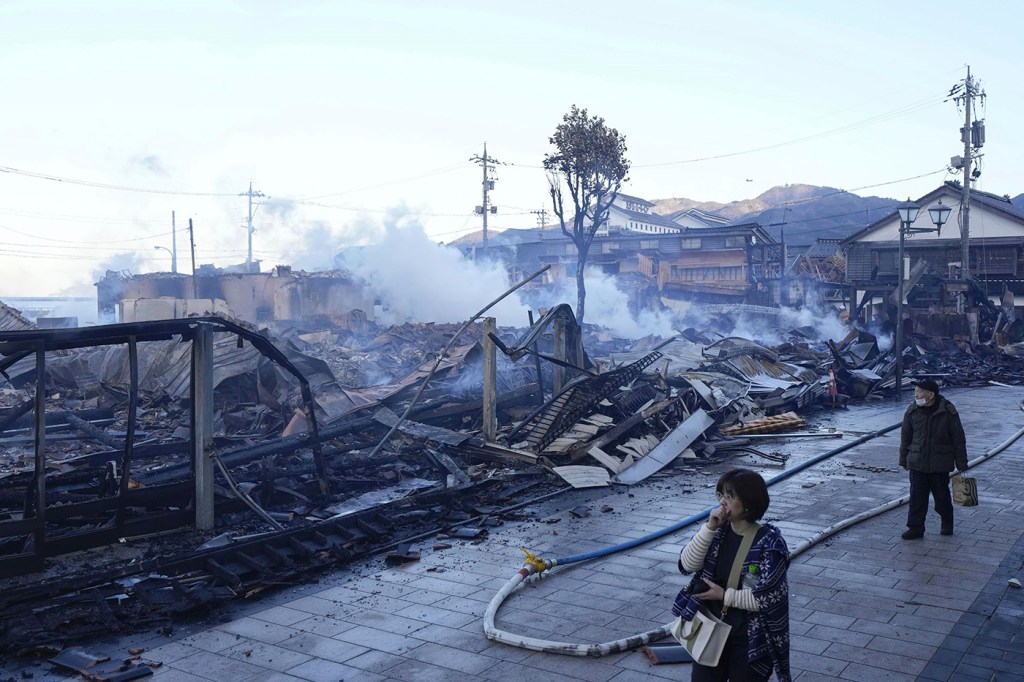Japan’s latest earthquake could’ve been much worse, a Northeastern expert says, but the country spends money to ‘keep people safe’
The East Asia country has comparatively low earthquake casualties given the magnitude of their quakes, thanks to their emergency preparations, a Northeastern expert says.

On the first day of 2024, a 7.5 magnitude earthquake struck Japan, killing at least 57 people and destroying thousands of homes.
This is not the first time the East Asian nation has weathered such a disaster. Japan has been hit by many powerful earthquakes, including one at 9.0 magnitude in 2011 that led to the island country being hit by tsunami waves and prompted a nuclear incident.
But despite this, Japan’s death toll count from earthquakes remains relatively low thanks to the country’s disaster preparation and recovery methods, says Northeastern University professor Daniel Aldrich.

“One of my favorite studies that I did was looking at mortality rates from earthquakes and comparing it to how much governments spent on things like safety nets,” Aldrich said. “There’s a very, very, very high correlation. Countries like Japan spend a lot more of their money on keeping people safe … and are typically better prepared.”
Editor’s Picks
Earthquakes of greater magnitude yielded higher death tolls in nations where the governments don’t have as many of these mechanisms in place. For example, last year’s 7.8 magnitude in Syria and Turkey had a death toll of 41,000. A 7.6 magnitude earthquake in Pakistan in 2005 killed at least 86,000. But Japan’s 2011 quake — at a much higher magnitude — killed about 20,000, a fraction of these other disasters.
Long history of disasters
Aldrich, who leads a Dialogue of Civilizations course on disaster and recovery in Japan, said the country has a long history of disasters, especially earthquakes given its position in the center of several tectonic plates. There’s evidence the country has experienced earthquakes and tsunamis for over a thousand years.
“It has been a nation that has struggled with disaster and overall, has done a pretty good job of mitigating disaster,” Aldrich said.
Japan has done this by integrating earthquake preparedness into everyday culture. Students in Japan have earthquake drills, the way schools in the United States have fire or active shooter drills, Aldrich said. When he himself lived in Tokyo, Aldrich took part in training on how to use firefighting equipment and practice first aid, both things that can help in case of an earthquake.
“That’s how prepared the Japanese government wants citizens to be. Japan is a nation that lives in the Ring of Fire,” he said, referring to the area in the Pacific known for its active volcanoes and frequent seismic activity. “They literally have hundreds of earthquakes … because of their location.”
Top-down, bottom-up approaches
Aldrich described Japan’s approach to disaster preparedness as two-pronged. On the one hand, there is a top-down element, meaning initiatives that come from the government before, during and after a disaster. This includes disaster drills and training, making buildings with exit signs for evacuations and installing earthquake warning systems (which can alert people of a quake 30 seconds before it strikes), and training first responders to deal with these types of crises.
Featured Posts
This contributes to a secondary bottom-up approach to disasters, which means the average person is also equipped to respond in these situations. Many people living in Japan know how to prepare for an earthquake and react if one strikes. Aldrich said this was evident when a Japanese commercial plane hit a coast guard aircraft responding to the earthquake — only five people died on the coast guard plane while the rest of the passengers were able to evacuate safely.
“We had firefighters on the scene within seconds,” Aldrich said. “No civilians were killed because they had a very calm evacuation. Japan has done a very good job over time building that top-down and bottom-up response. … The government pushes really hard to make sure people are aware. We can’t stop earthquakes. What we can do is build into our environment a variety of protections.”
Buildings sway and flex, but don’t snap
Part of this is how buildings are built. Aldrich said over the last 60 or so years, Japan built buildings with foundations that are built to sway with vibrations instead of snapping. Aldrich experienced this firsthand when on the 17th floor of a Japanese building during a major earthquake a few years ago.
“The whole building swayed back and forth, but not a single pane of glass broke,” he said. “None of the plaster broke. The whole building was built to flex. That’s very much a modern technology. … Older buildings, unfortunately, tend to snap off their foundations because they’re so rigid.”
This is part of the reason casualties during a disaster aren’t totally preventable. Not every building has been updated, which is why, Aldrich says, many of the images coming out of Japan show older buildings made of concrete and plaster that snapped. Disasters like this always pose a risk to vulnerable populations, like the elderly, Aldrich added.
But top-down mechanisms and preparations can help drastically reduce the impact.
“Reducing casualties to zero would be fantastic,” he said. “But it’s probably not going to happen. You can’t retrofit every building. … But I think this is a moment in time for us to reflect on what to do better.”











